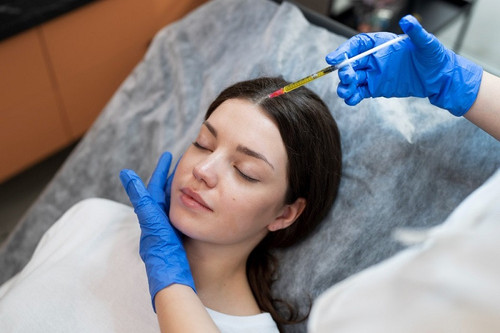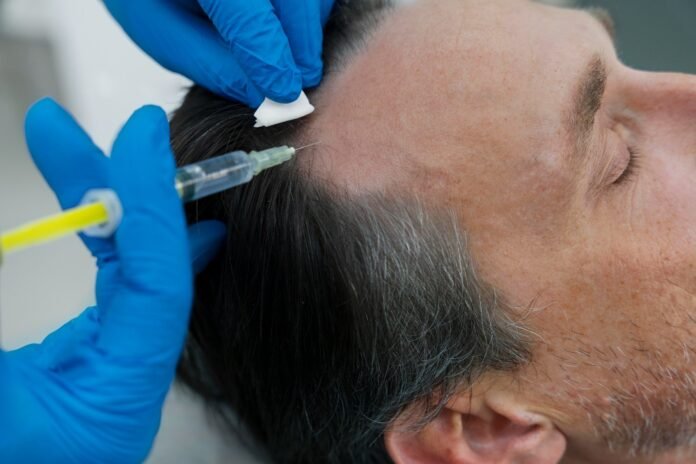Ever questioned what your own blood can do beyond keeping you alive? Pondered on how a simple injection could potentially alleviate chronic conditions or heal sporting injuries? Or are you simply on the lookout for non-surgical yet effective treatments to combat the earliest signs of ageing? If your answer to any of these questions is a resounding ‘yes’, then it’s high time you acquaint yourself with Platelet-Rich Plasma (PRP) Injections.
In this comprehensive guide, let’s traverse the globe of PRP Injections from its core concepts to its application, advantages, drawbacks, and beyond, giving you an informed perspective on this groundbreaking medical advancement. Step into the exciting world of regenerative medicine with us!
Table of Contents
What Are PRP Injections And How Do They Work?
Platelet-Rich Plasma (PRP) therapy, also known as Autologous Conditioned Plasma therapy, is an innovative technique hinging on the body’s remarkable self-healing capabilities. This process uses elements of a patient’s own blood to stimulate tissue regeneration and accelerate the healing process.
First, a small blood sample is drawn from the patient. This sample undergoes centrifugation, a process which separates the red and white blood cells from the platelets, creating a concentration of platelets four to eight times the typical level. This concentration, termed as the Platelet-Rich Plasma, is then re-injected into the required area of the patient’s body to stimulate the healing, regrowth, and rejuvenation of tissues.
The Unique Benefits Of PRP Therapy
PRP is a non-surgical, natural treatment that harnesses the healing power of your own platelets. From reducing inflammation and discomfort in conditions like Osteoarthritis and tendonitis to aiding skin rejuvenation and hair regrowth, PRP’s therapeutic use spans a wide swathe of medical disciplines.
A pivotal advantage of PRP lies in its autologous nature – meaning it comes from the patient’s body, significantly reducing the risk of allergic reactions or transmission of diseases. Additionally, it’s a comparatively quicker procedure with minimal downtime, making it a convenient outpatient procedure.
The Procedure Unveiled: What To Expect?

While the thought of blood extraction and re-injection might seem daunting initially, the PRP procedure, when conducted by a trained professional, is relatively straightforward.
To begin, a numbing agent may be applied to the targeted area to ensure the patient’s comfort. Post numbing, a blood sample is drawn, usually from the arm. The blood sample is then spun in a centrifuge, isolating the platelets from the other blood components. The final step involves injecting the PRP into the affected area, encouraging tissue healing and regeneration.
Evidence-Based Uses Of PRP Therapy
Considerable scientific evidence supports the use of PRP for musculoskeletal conditions such as osteoarthritis, tendinitis and ligament injuries — particularly in the knee, shoulder and ankle. In cosmetics, PRP shows promise for skin rejuvenation, hair regrowth, and even as a supportive therapy in combination with other skin treatments like Microneedling.
Cautions And Considerations: Drawbacks Of PRP Therapy
Like any therapy, PRP injections have considerations to bear in mind. Firstly, it’s not universally applicable to everyone. Individuals with certain health conditions such as cancer, haemodynamic instability, sepsis, and severe anaemia may not be ideal candidates for PRP. Secondly, as the effects of PRP are gradual, it may require a series of injections over several weeks or months to achieve optimum results.
The Financial Aspect: Are Prp Injections Cost-Effective?
While PRP therapy is gaining favor among clinicians and patients, it’s important to scrutinize the cost. Considering it is an advanced procedure, it is more expensive than conventional therapies. Also, insurance coverage for PRP varies significantly, and in many instances, it’s not covered at all.
The Final Thought: A Glimpse Into The Future Of Medicine
In conclusion, PRP Injection therapy, a natural, non-surgical method, offers promising potential in facilitating tissue healing and regeneration in a variety of medical fields. While it may not be a panacea for all ailments, its increasing adoption worldwide signals its potential as a valuable tool in regenerative medicine.
Moreover, the concept of using one’s own body to heal itself is not entirely new, and PRP therapy takes this concept to a new level. It’s crucial, however, to consider individual medical conditions, the procedure’s cost, and expected results before opting for this therapy.
As we continue to push the boundaries of medical science, treatments like PRP injections illuminate the vast potential lingering in our own bodies, propelling us into the exciting future of medicine. The saga of PRP injections is far from over! It’s only the beginning of an exciting chapter of medical innovation.








